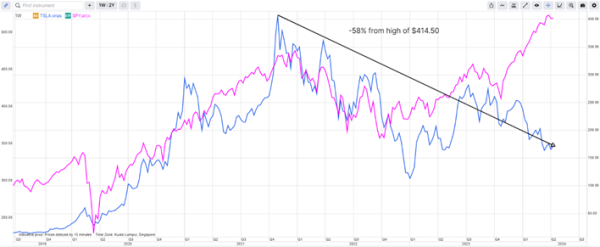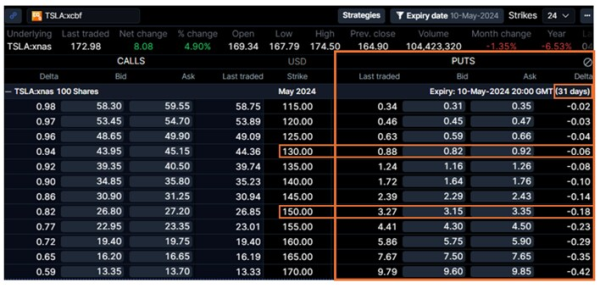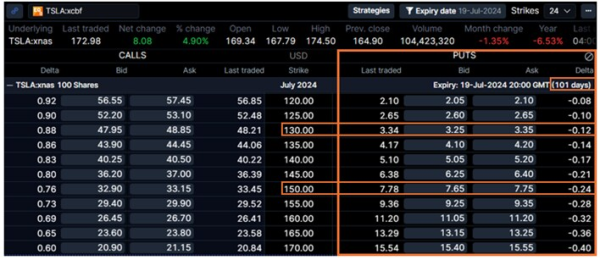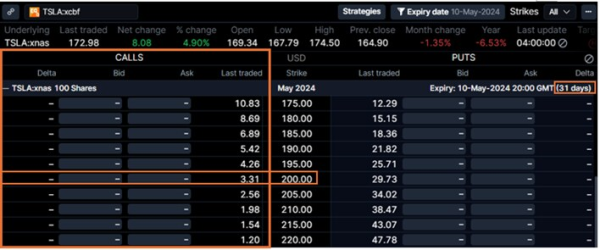How to Buy Tesla on Dips Using Options

Why has Tesla been declining?
Tesla has been facing a number of key challenges in the past 2 years, mostly from competition from global brands, in particular Chinese EV makers. Some of the key competitors include BYD, Xiaomi, Rivian, Nio, Audi and Mercedes. As a result, Tesla has resorted to price cuts to stay competitive and as a result led to lower margins.
Secondly, the market’s premium on Elon Musk is beginning to diminish as the firm continues to struggle in recent times. Expectations have been set high and the market has been repricing this premium over the past year.
Thirdly, the elevated level of interest rates does have an effect in reducing overall demand of luxury goods. As Tesla is priced and marketed as a premium brand, cheaper alternatives are more appealing in this environment.
When is a good time to buy Tesla?
Although it is challenging to pick the bottom in any stock, investors who have been waiting for this dip would be happy to know that you don’t have to buy the absolute bottom to build a good portfolio over time. Often, it is as important to create a structured plan to accumulate shares over a period of time to take advantage of dollar cost averaging and bet that markets in general rise over time, especially market leaders.
What can you do?
Clients can choose to accumulate Tesla shares over time by selling cash secured puts, which enables them to earn premiums while waiting for the price to move to their desired purchase price.
This is especially useful if a trader/investor is bullish on a stock over the longer term but believes that there could still be some downside to the stock price in the short term. This can happen in bullish, bearish or even volatile markets. In fact, volatility would be good for option premiums.
Example: The investor is interested in buying Tesla at $150 while Tesla is still trading at $172.98 on 8th April 2024.
1. Investors can sell a cash-secured put option with a strike of $150 and expiration date of 10th May (31 days to expiry). By selling the option, you receive a premium of $327 ($3.27 x 100 shares) from the buyer of the option.
2. Setting aside sufficient cash of $15,000 ($150 x 100 shares) to cover the potential purchase of 100 Tesla shares at $150 if the option gets assigned.
3. Two potential outcomes:
a) If Tesla remains above $150; you’ll keep the premium of $315.
b) If Tesla falls below $150; the put option may be exercised and you’ll need to buy 100 shares of Tesla at $150.
4. Annualized yield of 21.95% derived by (3.27/172.98) x (360/31)

Comparing with a longer maturity, you can see how this changes the premium you receive and how far you’ll be able to strike.
- For the same strike at $150, the premium increases to $7.78 as the duration increases to 101 days. (Annualized yield 16.03%)
- For a similar premium of $3.34, you can now stretch the strike to $130 as the duration increases to 101 days. (Annualized yield of 6.88%)


What if Tesla reverses higher?
If you are concerned about missing out on the upside if Tesla starts rallying from here on, you can consider buying an out of the money (OTM) call option in addition to selling the put option. This is called a collar strategy. For a premium of $3.31, you can buy an OTM call option at $200, expiring in 31 days. Therefore, if Tesla rises above $200, you will be effectively long from $200 at expiry.
